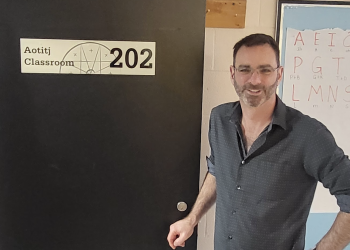With political “centrists” like Mark Carney and Keir Starmer announcing intentions to limit immigration this month, one would think the far-right is now redefining the political centre in ways once done on the political left. These announcements mark a disturbing new political alignment, whereby all main political parties have pivoted towards the goals and talking points of the far right.
It is not that immigrants were always welcome in the core capitalist liberal democracies, even as migration expanded during the postwar boom years and through multicultural policies in the 1960s and 1970s. The postwar expansion relied on these workers to do jobs at low pay that many other people would not do. In this respect, their labour power perpetuated an imperial division of labour, which benefitted the native-born citizens of the imperial, core capitalist states.
When the boom went bust, starting with the first significant postwar recession, 1973-1975, political pressure to reduce migration and send immigrants back to their homelands increased across many core countries. But it largely did so within the legal structures of the postwar period, which respected the residency rights of foreign-born nationals, and provided pathways to citizenship. These openings—which were by no means very permissive—were a response to the jus sanguinis of the ethno-nationalist right, and to the race policies of the Nazi regime in Germany, discredited after 1945.
Following the defeat of Nazism in 1945, the social divisions of the Western countries were sutured around a new policy consensus that favoured expanding the welfare state, and securing workers’ rights, notably through collective bargaining. The state would pursue “Keynesian” demand management, stimulating the economy through deficits to ensure full employment and investing in public projects when the private sector failed to meet certain goals democratically deemed essential—like affordable housing. This consensus came to be known in the US as the “New Deal,” and in the UK, the other main imperial-capitalist state, as the “postwar settlements.”
This type of economic management was anathema to conservatives throughout the imperial-liberal democracies in the interwar period. Their policy program was built around balancing budgets and promoting individual self-reliance through the market system at home and imperial expansion abroad. You had to work for your own lunch, no free rides, even as the industrial system created huge fortunes through the arbitrary concentration of power that came from machine efficiency and illiberal expansion of resource exploitation in the colonies.
But by 1946, in all the major democracies of the West, these conservative instincts bled away. In Canada, Ontario Conservative Premier George Drew was one of the first to pursue redistributive policies. Famously, it was Richard Nixon, a Republican president (1969-1974), who uttered “we are all Keynesians now” in 1971. A set of policy proposals that had begun on the Left had become what we would now call “centrist.” But the centre was not to hold.
Only a decade later in the 1980s, free market liberalism had swept away the Keynesian consensus. The political Right was in the ascendency, and its policy goals were to cut the welfare state, discipline workers (especially by deregulating labour laws and punishing unions), balance budgets, and cut taxes to stimulate private sector growth. At first, this set of policies was hotly contested. The Left recognized it as its nemesis from the 1930s, making a comeback. Yet this nemesis also reshaped public policy such that by the 1990s, it had become the new political centre.
Bill Clinton’s New Democrats (in power 1993-2001), and Tony Blair’s New Labour (in power 1997-2010) finished the neoliberal, free market reforms that had been initiated in the 1980s by President Reagan and Prime Minister Thatcher. In Canada, Jean Chrétien and his finance minister Paul Martin (in power 1993-2006) ushered in cuts to social services, by cutting the transfer payments to the provinces that had been established to permit the expansion of the Canadian welfare state on a shared-cost basis. Having done that, they cut taxes too, favouring the rich.
It sort of worked for a while, until it didn’t. The private sector expansion of 1993-2008 brought about an entirely new type of society from the one built after World War II. The latter had flattened class and status hierarchies. Now, they re-emerged, but in new forms that gave shape to new anti-establishment politics and populisms, especially those focused on restoring respect for “real people.” The political centre built by right-wing conservatives allowed space for multiculturalism and slow affordances to gender and sexual diversity, but it created huge gaps between rich and poor, and within the wealthy themselves, enormous chasms between the merely wealthy and the plutocratic super elite.
The political economy that came to dominate the liberal democracies of the West after the 1973 recession promoted economic policies (deregulation, low inflation, low social spending) that inflated asset values (stocks, real estate, bonds), allowing banks to print private money, while starving the public sector of the ability to redistribute wealth and build social programmes that might correct market-driven inequalities.
When the crash came in 2008, there was no serious, institutional response from the Left, which had ceded its policy realism to the right-wing “centre.” The Democratic Party no longer responded to popular forces urging economic redistribution. Barack Obama’s message of hope may have meant many things to many people, but his failure to act on inequality and produce a populism aimed at the concentration of wealth meant that the inevitable insurgency against the new plutocratic elite fell mostly to the political right.
While in the 1970s, the right remade the political consensus (or “the centre”) around economic ideas of balanced budgets and cultural ideas of individual self-reliance via the market, this time they are returning to a deeper well. Donald Trump became a serious contender to the Republican Party on a message focused on border walls against immigrants and nationalist tariffs against free trade. These are now the policies that are reshaping the political “centre,” as politicians like Mark Carney and Keir Starmer—the leaders of ostensibly “left-of-centre” political parties—pursue policies limiting immigration levels, pivoting away from free trade, and abandoning multilateral climate change targets (another big part of the new Trump consensus, just ask Tony Blair).
The political right is in the ascendency, reinventing the political centre (the consensus that will govern the rotation between main political parties in the Western “democracies”), but their solutions are as stillborn as those of the 1980s—unable to provide lasting solutions that won’t create even larger crises.
Just on immigration, many core capitalist countries are experiencing acute labour shortages, especially in the construction, transport, care, and service work sectors. As the OECD points out, many of these sectors have had difficulty recruiting because of “non-wage job quality dimensions” which have led to “greater exposure to both mental and physical health risks.” Clearly, immigration restrictions are not going to help this matter and will only make our care deficits—in health care, elder care, and childcare—worse.
By contrast, migrant Keynesianism (e.g., relying on population growth to help grow the economic base) would meet the public’s labour force needs, while allowing newcomers to benefit from their contributions to our shared wealth.
The apparent lack of social services—especially housing—for this labour force is the product of over-reliance on free market policies, inherited from the now lapsed, free market consensus of the 1990s and 2000s. Rather than immigration limits—which pivot the centre towards meeting the policy demands of what used to be called “the far right”—the solution is public investment in the things we need: universal daycare and expanded early learning, universal long-term care, public health investment, affordable housing investment, and a pivot of our mobility infrastructure away from dependence on climate-altering carbon emissions.
These are potentially expensive investments, but they can be paid for by redistributing wealth and income, especially from those who have overwhelmingly benefitted from the neoliberal, free market expansion, since 1982.
To be precise, those who benefited most are over-represented in the upper echelons of the top 0.1per cent of the population (in Canada, the 30,000 people, 80 per cent of whom are men, who earned more than $900,000 a year in 2022). Their accumulated wealth should be prevented from speculative circulation in off-shore tax havens (in 2019, Canadian corporations held $381 billion in the top 12 offshore tax havens, a more than seven-fold increase on the amount held in 1999, when it was already accelerating). Instead, those fortunes must be made to contribute to democratic public policy objectives—like building adequate housing for all our work force. If we don’t have to rely on market forces, and we don’t have labour shortages, this can be done quickly.
The way out of the impasse of the present is to speak boldly of the possibilities of a better, more democratic and inclusive future, one in which democratic economic decision-making once again puts the market in its place. If it is not done on the democratic left, it will be subordinate to the racial politics of the authoritarian right, whose techno-visions of the future are of a master race that will inherit a dying Earth.
Unfortunately, the stakes are high.
Matthew Hayes is a sociology professor and the Canada Research Chair in Global and International Studies at St. Thomas University.



![‘We are treated as disposable,’ says former migrant fishery worker [video]](https://nbmediacoop.org/wp-content/uploads/2025/08/MigrantRightsNetworkAug72025-350x250.jpg)






